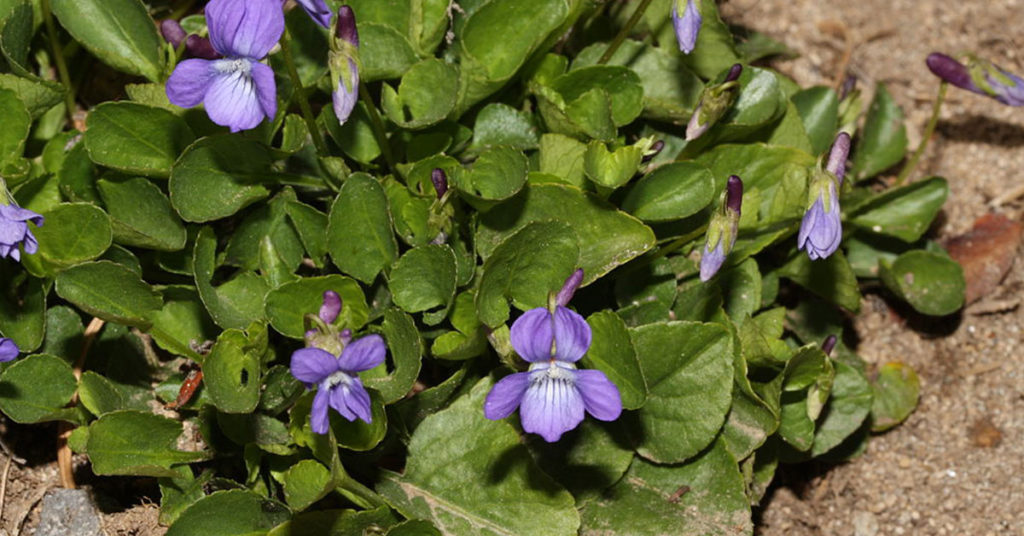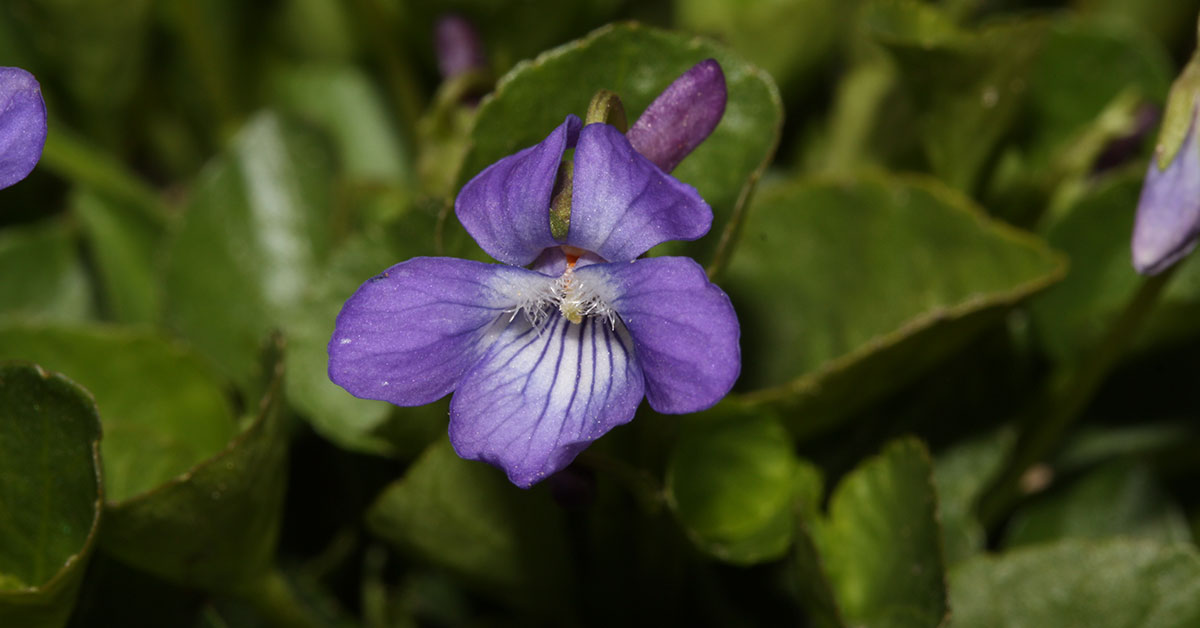Western Dog Violet, also known as Viola adunca, is a low-growing, sprawling perennial that is native to both eastern and western North America. It forms a tidy bunch of heart-shaped, dark green leaves. Attractive, petite, lavender-blue flowers, 1 in. across (2.5 cm), with noticeable white throats and vivid orange stigmas, rise above the foliage in mid-spring and occasionally intermittently into late summer.
What is Viola adunca?
Due to its lack of perfume, the Common Dog-violet was given the nickname “dog” to denote its inferiority to its close relative, the Sweet Violet (Viola odorata), which has a strong aroma. In the UK, dog violet is widespread. You can find them in meadows, hedgerows, heaths, and woodlands. From April to June, they are in bloom.
Here are some brief facts about the popular aesthetic plant:
- Latin name: Viola adunca
- Other names: Western Dog Violet, Kirk’s violet
- Native to: North America
- Invasiveness: No
- Tenderness: Herbaceous perennial
- Sun: Full sun to partial shade
- Water: Low, Moderate – High
- Soil: moist, yet well-draining
- Hardiness zone: 4-8
- When to plant:
- Spacing:
- Plant height: 1 ft
- Bloom period: Spring, Summer
- Time to maturity: 3-6 months
- Container friendly: Yes
- Fertilizer: Not required
- Toxicity: Yes
- Drought tolerant: Yes
- Deer resistant: Yes
- Pest resistant: Yes
How to grow Viola adunca

Fertilization can help establish plants. Make a list of your landscape’s features visually. Every few years, trees need to be fertilized. Annual fertilization of shrubs as well as other species in the landscape is possible. A dirt test can reveal the soil’s current nutrient levels. A specialized fertilizer may be needed rather than an all-purpose one if one or even more nutrients are deficient. Nitrogen-rich fertilizers will encourage the growth of green, leafy plants. Too much nitrogen in the ground can make plants grow too quickly vegetatively at the price of developing flower buds.
Late in the growing period, fertilization should be avoided if possible. Applications made then have the potential to promote luxuriant, vegetative growth that won’t have time to freeze off before the arrival of winter. Many plants require full sunlight to reach their full potential. Even though their leaves might not be as brilliant or their flowers might not be as abundant, a lot of these plants can survive with a small amount of sunlight. The areas of a structure that face the south and west typically receive the most sunlight.
The sole exception is when structures are so close to one another that shadows are cast by nearby buildings. It signifies precisely what it sounds like: moist and well-drained. Due to the soil’s texture, which allows extra rainwater to drain away, the soil is damp without being soggy. The average plant prefers one inch of water every week. Be careful not to overwater. Regular watering is essential for a plant’s establishment during the first two years following installation.
Growing Viola adunca in containers
When used as an attractive element, as a planting alternative when there is little to no soil available to grow in, or for plants that need a soil type that is not present in the yard or when ground drainage in the yard is inadequate, containers are wonderful options. If you are growing multiple plants in a container, be sure their cultural requirements are all identical.
Select a container that is deep enough to accommodate root growth and development and that is sizable enough to maintain a proportionate balance between both the fully formed plant and the pots. Large containers should be planted where you plan to keep them. Drainage holes should be present in every container. To prevent soil from washing out of the hole, cover it with a mesh screen, a paper coffee filter, or fragments of a broken clay pot (crock). You should choose a potting soil mix that is suitable for the species you have chosen.
When to start Viola adunca seeds
In the fall, seeds can also be saved and subsequently planted indoors or in the cold frame.
When to plant Viola adunca
Planting is best done in the spring and fall when the soil is accessible and not at risk of freezing. The benefit of planting in the fall is that roots can grow without having to fight with newly emerging top foliage as in the springtime. Perennials that dislike damp weather or those in colder climates prefer spring since it allows for full establishment before the first winter.
How to collect Viola adunca seeds
Wait for the seed pods to mature before removing them from the plant. Let them dry before you pry them open.
Wildlife attracted by Dog Violet
This Plant attracts butterflies and other pollinators. It also attracts aphids, caterpillars, and ants.
Common problems
Watch out for pansy leaf spots, snails, powdery mildew, slugs, and violet gall midges. Aphids multiply swiftly, and each female can give birth to up to 250 live nymphs without mating within a month. In the spring and fall, when the environment changes, aphids frequently appear. They frequently gather in large groups at the tops of branches and eat succulent tissue. Humans are poisoned by the rhizomes, fruit, and seeds, which can lead to digestive distress, intestinal issues, and circulatory and respiratory depression.













